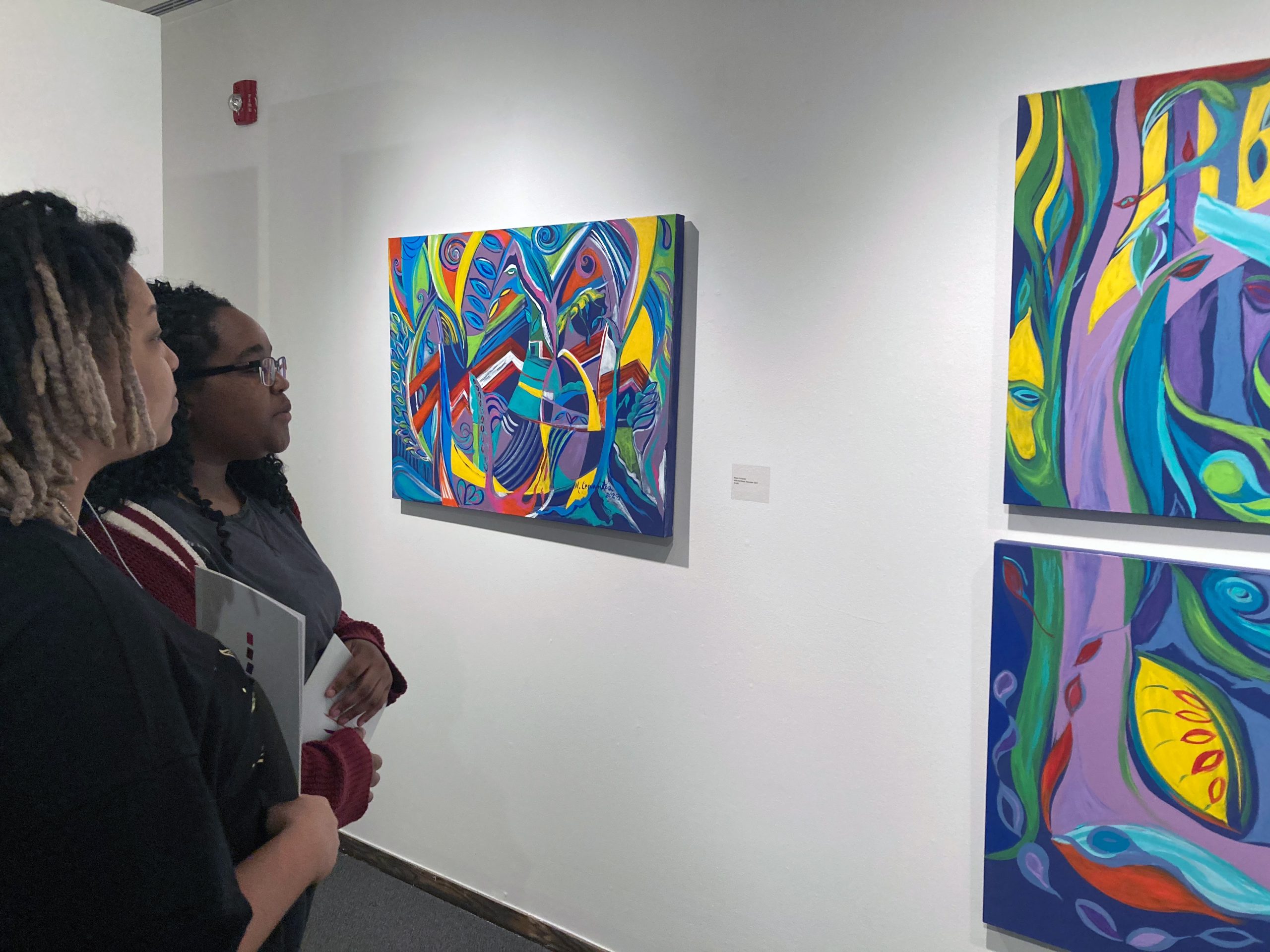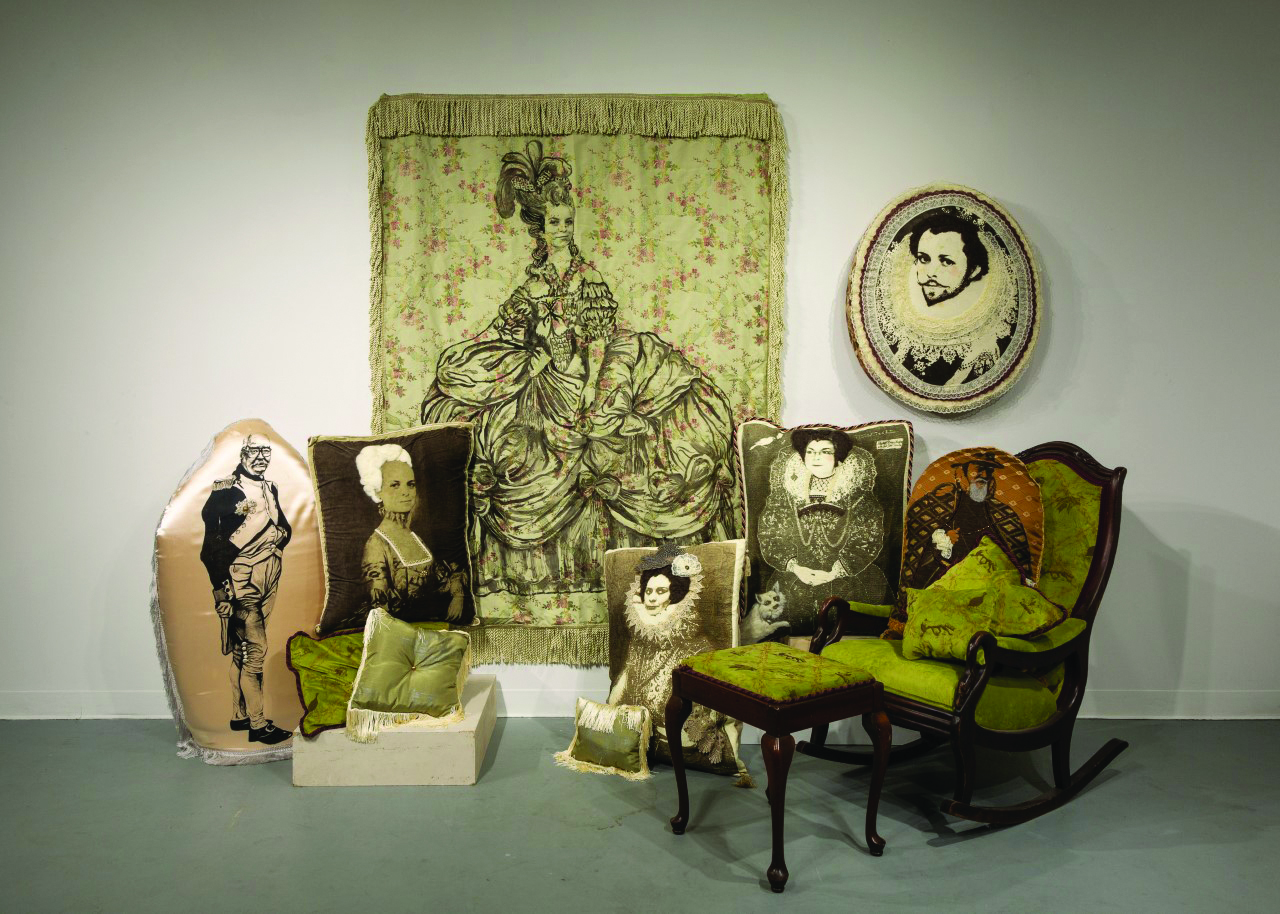Anderson Gallery welcomes Civil War cartoon exhbit
Story by Avery Gregurich
Drake University’s Anderson Gallery opens a new exhibit today that offers an exclusive perspective of the United States during the Civil War via a unique art form: the political cartoon.
The exhibition, titled “Draw Your Weapons: Civil War Cartoons from Harper’s Weekly,” features editorial cartoons printed in the famed publication during the conflict. It was co-curated by the Associate Professor of Art History Maura Lyons and 11 students as part of Lyons’ Curatorial Seminar.
Lyons has been working towards the completion of this exhibit for “about two years.” She said she came across these Civil War cartoons by chance while conducting some of her personal research.
“I’ve been working on the Civil war period in my own scholarship for a couple of years now, focusing on landscape imagery,” Lyons said. “I ended up looking through each issue of Harper’s Weekly magazine to look at the range of images for the years of the Civil War.”
She found the editorial cartoons in the back pages of the publications and the idea grew from there. Lyons felt the cartoons were an accessible “visual format that would allow people to enter into the 19th century” and “connect to this time period.” She also saw an opportunity to potentially “bring some people to the gallery who wouldn’t go otherwise or haven’t been,” citing the recent increase of public interest in the Civil War.
While the exhibit idea was proposed by Lyons, she explained the process of constructing the exhibit as a truly collaborative development between herself, Gallery Director Heather Skeens, Research Assistant Maria Hanson and the 11 students in Lyons’ Curatorial Seminar.
Pamela Hayek, a junior politics and history double major, is one of those students. By the time she signed up for the project, she said the project was already well under way.
“Professor Lyons and Heather did a lot of groundwork for us,” Hayek said. “The process started before we even got there.”
Once the students got involved, they began by examining modern examples of political cartoons to understand their basic components. Then, the students divided into smaller groups, which were assigned a specific time during the Civil War.
There was not a shortage of subject matter for the curators to examine thanks to a university archive.
“Drake University actually has a database called Illustrated Civil War newspapers,” Hayek said. “We have access to all of the Harper’s Weekly’s from that time period.”
The student groups sorted through this database and selected images that were both “visually interesting” and had an “interesting message.” Some of the images evoked a particular response in the curators.
“Every once in a while you would come across a cartoon that can totally relate to today,” Hayek said.
For co-curator Josh Tobin, a senior theatre design and technology major, these connections spoke more to the constancies of the public’s opinion on government.
“There will always be a politician who is not liked by their constituents or a war that will cause a lot of controversy,” Tobin said. “Cartoons give a very satirical view of their subjects.”
Tobin found that having such a wealth of material to choose from made it “hard to decide which cartoons fit best with our message.”
“We had to narrow four years of the war into 24 cartoons that cover four very different topics,” Tobin said.
Throughout the cartoon selection procedure, the curators were constantly conscious of the fact that modern viewers may not possess a thorough knowledge of the Civil War.
“Some of them are very specific,” Hayek said. “But, the label text that we have next to it will help to explain that for the modern viewer.”
Tobin echoed Hayek, saying while written labels will help viewers of the exhibit, it will ultimately be the viewer’s themselves who will determine meaning.
“The audience members will have to read into the messages and really study the cartoons,” Tobin said.
In combination to the descriptive labels, comparative cartoons from the 19th and 20th centuries accompany the cartoons in “an attempt to try to build a bridge between those cartoons and what we encounter today,” Lyons said.
Along with selecting the images, the curators also decided to mutate the malleable space of the Anderson Gallery into a setting more reflective of the exhibit’s subject matter.
“We wanted to remind people that one of the places that readers of the time would have encountered Harper’s Weekly is in their own homes,” Lyons said.
“We have recreated kind of a parlor in a house in the 1860s to represent where these cartons were being read,” Hayek said.
The Anderson Gallery will host the opening reception of the exhibit tonight from 5-7 p.m. The gallery will also hold several other events in conjunction with “Draw Your Weapons,” including two gallery talks and a public lecture.




